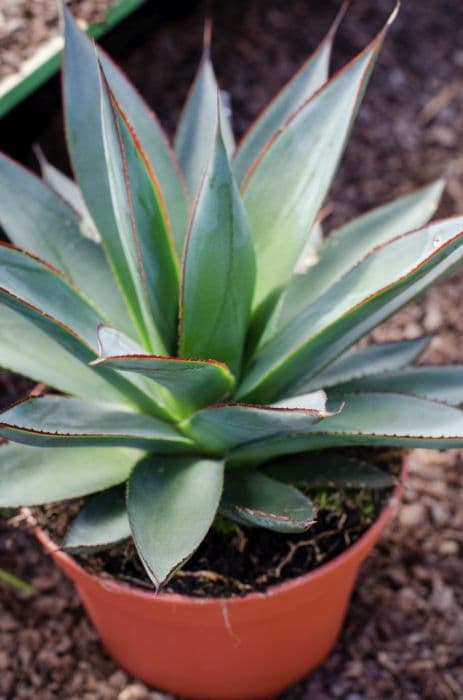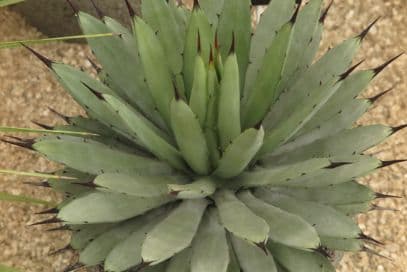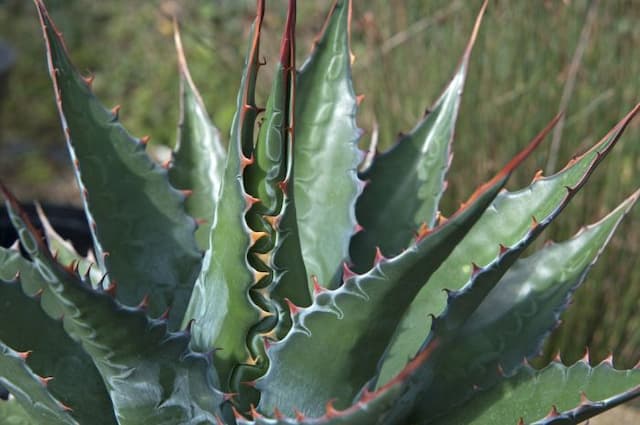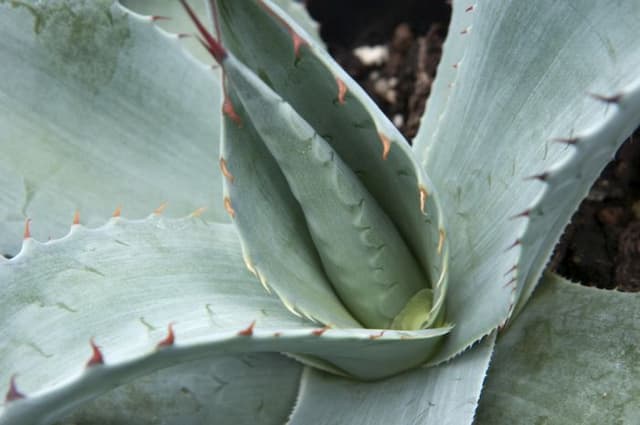Double Flowered Solomon's Seal Polygonatum odoratum 'Flore Pleno' (d)

ABOUT
The plant commonly known as double-flowered Solomon's seal has an appealing aesthetic that is cherished in many gardens. It is characterized by its graceful, arching stems that bear a row of delicate, double flowers. These flowers are white and resemble little bells, hanging in pairs or clusters underneath the shelter of the plant's leaves. They exude a subtle, sweet fragrance that can often attract pollinators and delight garden visitors. The leaves of the double-flowered Solomon's seal are a vibrant green, soft to the touch, and grow opposite each other along the stem, creating a ladder-like appearance. They are oval or lance-shaped and have a smooth and glossy texture, which adds to the elegance of the plant. After the flowering period, the plant produces berries that transition in color from green to a deep blackish-blue, providing visual interest even after the blooms have faded. Throughout the seasons, the double-flowered Solomon's seal brings a serene and sophisticated look to shaded garden areas, looking especially picturesque when planted in drifts or as a lush underplanting for taller shade-loving shrubs or trees. The combination of its fragrant, showy flowers, attractive foliage, and the textural contrast it provides make it an exceptional choice for those seeking to create a tranquil and picturesque garden setting.
About this plant
 Names
NamesFamily
Asparagaceae
Synonyms
Double Flowered Solomon's Seal, Double Flowered Scented Solomon's Seal, Variegated Double Flowered Solomon's Seal, King Solomon's Seal, Double Flowered Fragrant Solomon's Seal
Common names
Convallaria polyphylla, Polygonatum multiflorum var. thunbergii, Polygonatum officinale, Polygonatum vulgare.
 Toxicity
ToxicityTo humans
Solomon's seal is generally not considered toxic to humans; however, it is always advisable to exercise caution and avoid ingesting plants that are not commonly used as food sources or without proper identification and knowledge. If you suspect poisoning from any plant, you should seek immediate medical attention.
To pets
Solomon's seal is not typically listed as a toxic plant to pets. However, as with humans, ingestion of non-food plants can sometimes cause mild gastrointestinal upset, such as vomiting or diarrhea, in pets. If your pet displays symptoms after consuming any part of the plant, it is best to consult a veterinarian.
 Characteristics
CharacteristicsLife cycle
Perennials
Foliage type
Deciduous
Color of leaves
Green
Flower color
White
Height
1-3 feet (0.3-0.9 meters)
Spread
1-2 feet (0.3-0.6 meters)
Plant type
Herb
Hardiness zones
3-8
Native area
Asia
Benefits
 General Benefits
General Benefits- Ornamental Value: Polygonatum odoratum 'Flore Pleno', commonly known as Double Flowered Solomon's Seal, is valued for its attractive, double flowers that add aesthetic appeal to shade gardens.
- Shade Tolerance: It is well-suited for shaded areas in the garden, thriving where many other plants might struggle due to lack of sunlight.
- Low Maintenance: This plant is easy to care for, requiring minimal upkeep once established, making it ideal for both novice and experienced gardeners.
- Drought Resistance: Once established, Double Flowered Solomon's Seal can tolerate periods of dryness, reducing the need for frequent watering.
- Wildlife Attraction: The flowers of the plant can attract pollinators such as bees, which are essential for garden health and success.
- Seasonal Interest: It provides distinctive seasonal interest with its spring flowers, summer foliage, and yellow fall color, contributing to a dynamic garden landscape throughout the year.
- Ground Cover: Spreading by rhizomes, it can serve as an effective ground cover, suppressing weeds and reducing soil erosion in shaded areas.
- Companion Planting: It pairs well with other shade-loving perennials, enabling gardeners to create diverse and harmonious planting schemes in shaded beds and borders.
 Medical Properties
Medical Properties- Traditional Chinese Medicine (TCM) Usage: In TCM, Polygonatum odoratum, commonly known as Solomon's seal, is believed to nourish yin and moisten the lungs.
- Anti-inflammatory: Solomon's seal has been used traditionally to reduce inflammation.
- Immune System Support: It may have properties that help to support and modulate the immune system.
- Tonic for Fatigue: The rhizomes are sometimes used in herbal medicine as a tonic for weakness and fatigue.
- Digestive Health: Solomon's seal has been traditionally used to support digestive health.
- Respiratory Health: The plant has been used to aid in the health of the respiratory system.
 Air-purifying Qualities
Air-purifying QualitiesThis plant is not specifically known for air purifying qualities.
 Other Uses
Other Uses- As a natural dye: The roots of Solomon's seal can be boiled to extract a dye for coloring textiles or paper.
- In floral arrangements: Both the flowers and the arching stems of Solomon's seal can be used as a delicate addition to floral arrangements.
- Garden architecture: Due to their structural height and arching form, they can be utilized to create a vertical aspect in shade gardens.
- As a food source for wildlife: Solomon's seal berries provide food for birds and small mammals.
- Culinary addition: Young shoots of Solomon's seal can be cooked and eaten as a vegetable in some cultures.
- Leaf pressing: The foliage can be used for crafting activities such as making pressed leaf artwork.
- Erosion control: The spreading nature of Solomon's seal makes it suitable for stabilizing soil and controlling erosion in shaded areas.
- Photography: The unique appearance of Solomon's seal, particularly its double flowers, make it an attractive subject for nature and garden photographers.
- As a teaching tool: It can be used in educational settings to demonstrate plant growth and perennial life cycles.
- In perfumery: The flowers are sometimes used as inspiration or a minor component in perfume due to their subtle fragrance.
Interesting Facts
 Feng Shui
Feng ShuiSolomon's Seal is not used in Feng Shui practice.
 Zodiac Sign Compitability
Zodiac Sign CompitabilitySolomon's Seal is not used in astrology practice.
 Plant Symbolism
Plant Symbolism- Healing: The plant, also known as Solomon's Seal, is renowned for its medicinal properties and has traditionally been used to aid in healing.
- Protection: Solomon's Seal is believed to offer protection against negative energies and is sometimes used as a talisman.
- Wisdom: Its association with King Solomon, who was famed for his wisdom, extends its symbolism to represent wisdom and good judgement.
- Elegance: The plant's graceful arching stems and double flowers speak to a sense of poise and refinement.
 Water
WaterSolomon's Seal prefers even moisture and should be watered weekly, with a deeper watering during dry spells. To maintain consistent moisture, apply about 1.5 gallons of water per week directly to the base of the plant, avoiding wetting the leaves to prevent fungal diseases. During the growing season in spring and summer, ensure the soil is kept moist but not waterlogged; scale back watering in the fall as the plant prepares for dormancy.
 Light
LightSolomon's Seal thrives in partial to full shade, making it ideal for a woodland garden or a shaded area beneath deciduous trees. The plant can tolerate a few hours of morning sun but should be protected from the harsh afternoon light to prevent leaf scorch. A spot that offers dappled sunlight throughout the day is optimal for encouraging healthy growth.
 Temperature
TemperatureSolomon's Seal performs well in a range of temperatures, but it prefers consistently cool conditions. It can survive winter temperatures down to 0 degrees Fahrenheit but performs best when the temperature is between 60 and 70 degrees Fahrenheit. The plant may begin to go dormant if exposed to temperatures above 75 degrees Fahrenheit, so providing adequate shade and moisture during hotter spells is important.
 Pruning
PruningSolomon's Seal does not require regular pruning, but dead or damaged leaves should be removed to maintain plant health and appearance. The best time for pruning is in late fall or early spring before new growth begins. Additionally, after the foliage has yellowed in the fall, it can be cut back to ground level to tidy up the plant and prepare it for winter.
 Cleaning
CleaningAs needed
 Soil
SoilSolomon's Seal prefers moist, well-draining soil rich in organic matter, with a pH of 5.5 to 6.5. A mix of loam, peat, and sand or perlite can create an ideal growing medium.
 Repotting
RepottingSolomon's Seal should be repotted every 2-3 years or when it becomes root-bound to ensure its roots have enough space to grow and access nutrients.
 Humidity & Misting
Humidity & MistingSolomon's Seal thrives in moderate to high humidity levels, ideally between 40% and 60%, to mimic its natural woodland habitat.
 Suitable locations
Suitable locationsIndoor
For Solomon's Seal, ensure indirect light, cool area, moist soil.
Outdoor
Plant Solomon's Seal in shade, rich soil, keep moist, mulch well.
Hardiness zone
3-8 USDA.
 Life cycle
Life cyclePolygonatum odoratum 'Flore Pleno', commonly known as Double-flowered Solomon's Seal, begins its life cycle as a rhizome, which germinates in early spring, emerging as shoots that develop into arching stems. The plant produces pairs of leaves along these stems, which then give way to small, double white flowers that hang from the leaf axils in late spring to early summer. After flowering, the plant forms green berries that turn a dark blue-black when ripe. This perennial dies back to the ground in the fall, retreating into dormancy for the winter. During its dormant phase, the rhizome survives underground, storing energy to support the next year's growth. Throughout the years, the clumps of rhizomes slowly expand, creating larger colonies of the plant.
 Propogation
PropogationPropogation time
Spring to Summer
Solomon's Seal 'Flore Pleno' is typically propagated by division, which is best done in the fall after the leaves have yellowed or in early spring before the plant starts to grow. To propagate by division, carefully dig up the plant, ensuring to get as much of the root system as possible. Gently separate the rhizomes, making sure each division has at least one growing point, often referred to as an "eye." Divisions should be replanted immediately at the same depth they were originally growing, spaced about 12 inches (30 centimeters) apart to allow room for growth. Water the newly planted divisions well to help establish them. This method of division helps to maintain the health of the plant by rejuvenating older clumps and is an easy and efficient way to create new plants that will be true to the parent's characteristics.









